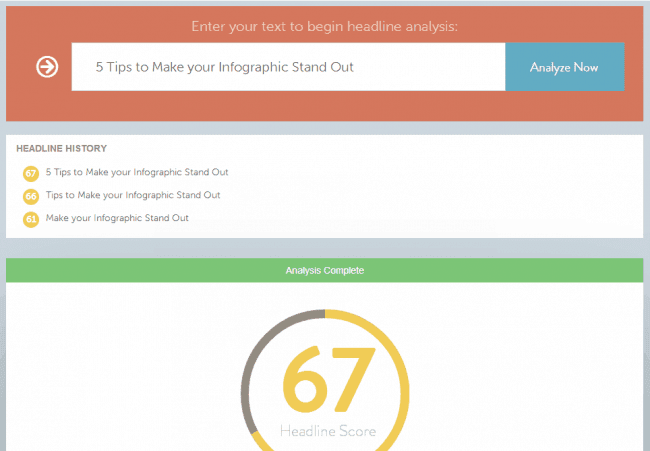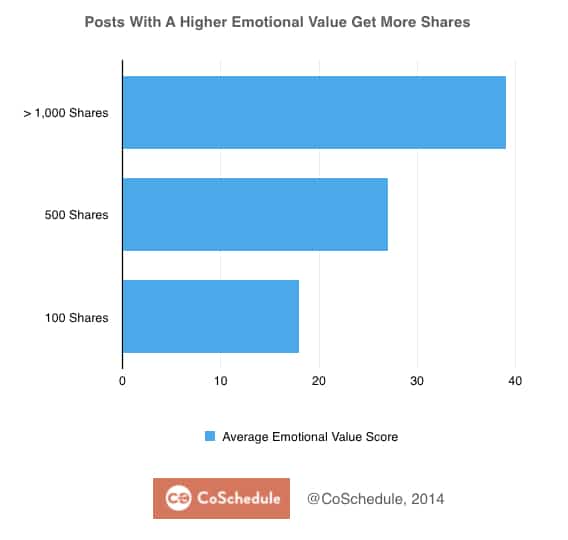Infographics are loved by marketers for their ability to communicate complex (and often data-intensive) ideas very quickly and in a visual way. This is good because 90 percent of information transmitted to the brain is visual.
And according to Unbounce, demand for infographics has increased rapidly in recent years.
But there’s a right way and a wrong way to make an infographic, and there are countless theories about the best techniques for making a shareworthy infographic. Here are five such ways to make your infographic stand out:
Headlines play a vital role in online marketing. Whether for an article or an infographic, a headline should have some impact on the reader. If your headline isn’t attention-grabbing, good luck getting viewers to read the rest of your infographic.
As with most functions of marketing, a variety of tools exist to help you write the perfect headline for your infographic. My favorite is the CoSchedule Headline Analyzer tool and I recommend a headline score of at least 60 for an infographic.
 You also need to check your headline’s emotional value. According to CoSchedule, posts with a higher emotional value get more shares.
You also need to check your headline’s emotional value. According to CoSchedule, posts with a higher emotional value get more shares.
 2. Provide Unique Value
2. Provide Unique ValueIt is very important to provide unique value to your readers. Make sure your infographic is truly helpful to the intended audience.
With so much information available on the internet, providing real value is one of the toughest tasks a modern marketer faces. Merge information and data from a variety of sources and present it in your infographic in a special way with a unique slant.
It should go without being said, but providing unique value doesn’t mean that you can add false facts and figures. Always check (and double-check) to ensure your facts, figures and data are correct and your sources are reliable.
Without a specific, pre-defined goal, your infographic will be ineffective. No matter how cool your design is or how much data you have compiled, your infographic will not serve it’s purpose if it doesn’t revolve around a relevant and interesting theme. And, with a specific goal in mind, it becomes easier to segment and target your intended audience.
Effective design means making your infographic simple and useful.
You didn’t put all the time and effort into research and design of your infographic, just to have it sit idle on a webpage, did you? Of course, you didn’t, which is why you also have to simplify and streamline the sharing process. Here are a few best practices to remember:
Building great infographics is often a process of trial and error and learning from your mistakes, but that doesn’t mean you’re doomed to a future of stagnant, boring content that no one wants to share or talk about.
By following these tips (and grabbing these ebooks for additional advice and guidance) you prioritize design and user experience over any other potential benefits, which confirms you’re making infographics for the right reason in the first place: to help users solve a problem that you have the answer to.